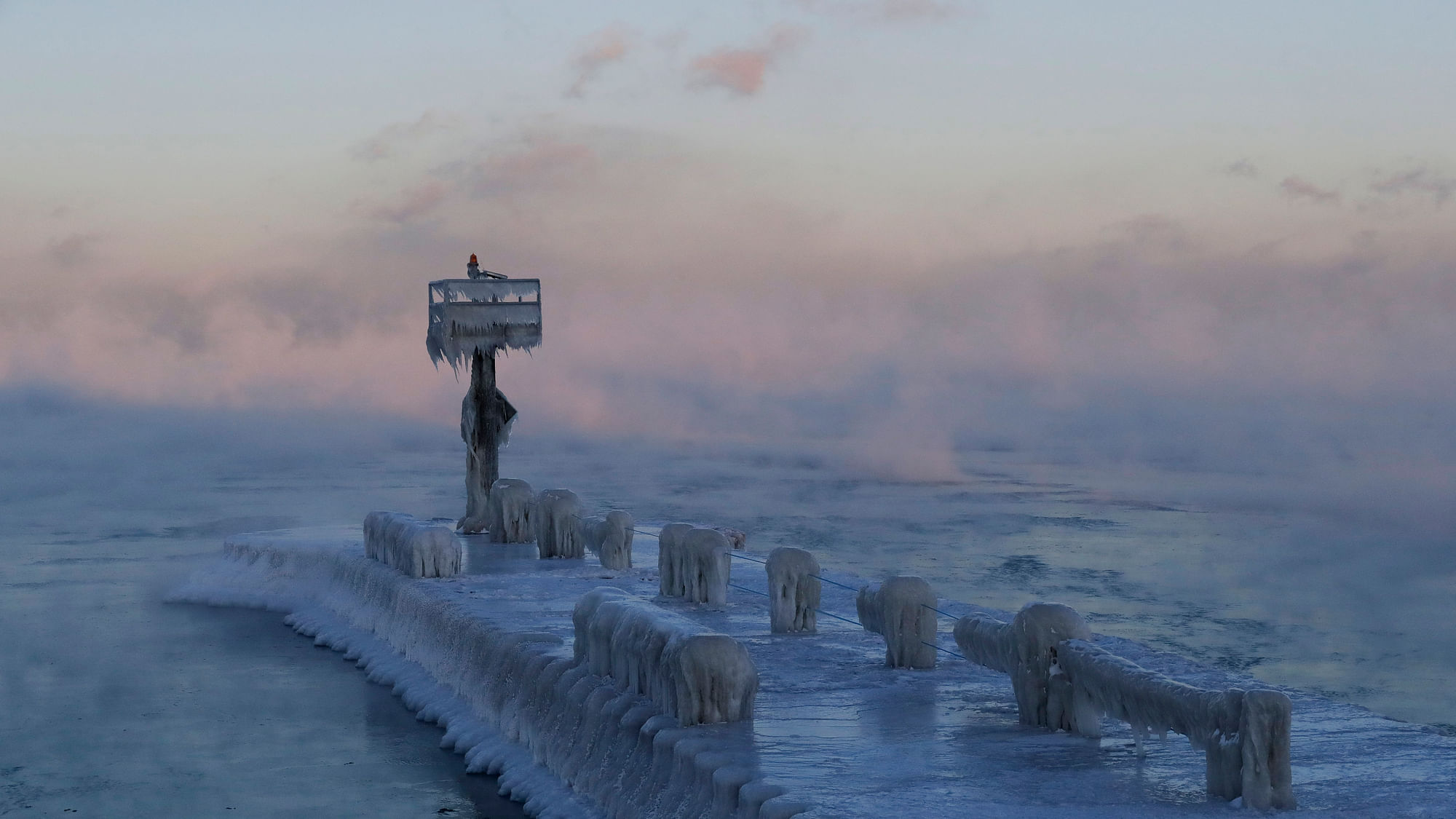In Pics: Winter Has Come to US Midwest as Polar Vortex Hits
People get on course with their daily lives, because they would still freeze to death sitting at home.

Current low temperatures “could easily freeze the flesh off your bones.”
That is the warning that the US National Weather Service gave its citizens.
In Illinois, temperatures could rise by 80 degrees within days. In Michigan, melting snow and rain and a 17-mile ice jam could lead to flooding. Across the Midwest, the sudden warmth was sure to bring more broken roads and busted water mains.
The polar vortex that brought many cities to a standstill was expected to end with a rapid thaw that experts say could be unprecedented. But the sudden swing from long johns to light jackets and short sleeves could create problems of its own.
"I don't think there's ever been a case where we've seen (such a big) shift in temperatures," in the winter, said Jeff Masters, meteorology director of the Weather Underground firm. "Past record-cold waves have not dissipated this quickly and here we are going right into spring-like temperatures."
On Thursday, the system marched east, spreading arctic conditions over an area from Buffalo to Brooklyn. In western New York, a storm that dumped up to 20 inches of snow (51 centimetres) gave way to subzero temperatures and face-stinging wind chills
In New York City, about 200 firefighters battling a blaze in a commercial building took turns getting warm on buses. The number of deaths that could be blamed on the cold climbed to at least 15.
For the nation's midwest, relief was as close as the weekend.
Rockford, Illinois, was at a record-breaking minus 31 (minus 35 Celsius) on Thursday morning but should be around 50 (10 Celsius) on Monday. Other previously frozen areas could see temperatures of 55 (13 Celsius) or higher.
The dramatic warm-up will offer a respite from the bone-chilling cold that canceled school, closed businesses and halted trains. But potholes will appear on roads and bridges weakened by the freeze-thaw cycle. The same cycle can crack water mains and homeowners' pipes. Scores of vehicles will be left with flat tires and bent rims.
Joe Buck, who manages Schmit Towing in Minneapolis and spent about 20 hours a day outdoors this week responding to stranded vehicle calls, said he's already taking calls for Monday to deal with a backlog of hundreds of stalled vehicles.
In Detroit, where some water mains are almost 150 years old, city workers were dealing with dozens of breaks, said Palencia Mobley, deputy director of the Detroit Water and Sewerage Department.
"We'll have all hands on deck. Hopefully, we'll be able to address as many of the issues as possible over the next week," Mobley said.
The thawing of pipes can sometimes inflict greater damage than the initial freeze. Bursts can occur when ice inside starts to melt and water rushes through the pipe, or when water in the pipe is pushed to a closed faucet by expanding ice.
(At The Quint, we are answerable only to our audience. Play an active role in shaping our journalism by becoming a member. Because the truth is worth it.)